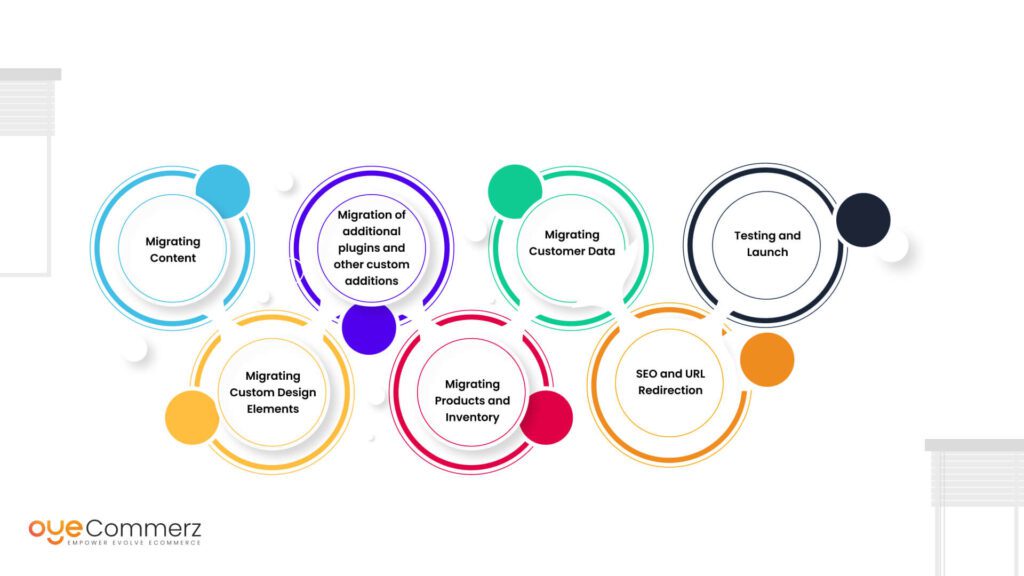In the constantly changing world of eCommerce, choosing the optimal platform is vital for your company’s prosperity. If you’re presently using WP and thinking about a migration to an alternative, you’re not the only one. Numerous businesses are making this transition to leverage Shopify’s comprehensive features, ease of use, and scalability. This guide will guide you on the process of migrating from WordPress to Shopify smoothly, guaranteeing that you unlock your eCommerce potential.
Why Switch from WordPress to Shopify?
Ahead of diving into the migration procedure, it’s important to know why this change can be helpful for your online store:
Accessible Tools: Shopify offers an intuitive interface that makes easier store management, enabling for non-technical users.
Scalability: As your business develops, Shopify can handle increased visitors and sales without sacrificing speed.
Integrated Features: Shopify comes with integrated tools for search engine optimization, analytics, payment handling, and much more, minimizing the necessity for multiple plugins.
Robust Protection: With Shopify, you utilize robust security protocols that safeguard critical customer information.
Steps for a Seamless Migration
Migrating your online store from WP to Shopify requires multiple actions.
Here’s how to achieve a successful transition:
Prepare Your Migration Approach
Begin by drafting your migration plan. Decide on which aspects of your present site you wish to transfer, such as:
Product data
User details
Transaction records
Blog content
Choose the Right Migration Option
Considering your preferences, opt for a migration service that suits your business. OyeCommerz delivers multiple plans:
Starter Package: Suitable for compact stores with minimal products.
Standard Migration Package: Suitable for medium-sized businesses with Shopify launch checklist intermediate demands.
Comprehensive Solution: Perfect for larger stores demanding broad customization.
Secure Your Data
Before beginning the migration, guarantee that you have a complete backup of your WP site. This step is crucial in the event anything goes wrong during the migration.
Extract Your Content from WordPress
Utilize tools or custom scripts to transfer critical content from your Shopify platform setup WP site:
Inventory
Users
Sales records
Content pieces
Import Data into Shopify
Once you have your information extracted, employ Shopify’s migration apps or external apps to transfer your content into your updated store. Confirm that all data is accurately structured and placed.
Customize Your Shopify Store
Once migrating content, customize your Shopify site’s layout to reflect with your business goals. Think about engaging a specialist if you require complex customization.
Set Up Payment Gateways and Logistics
Arrange billing solutions and shipping settings in Shopify to create a seamless purchase experience for customers.
Implement SEO Standards
To preserve your SEO performance during the change:
Implement 301 URL mappings from previous URLs to migrated ones.
Refresh metadata.
Optimize visual content and copy for search engines.
Review Your Updated Store
Before going live, thoroughly review your migrated platform. Look out for any errors, transaction errors, or untransferred content.
Launch Your Store
After everything is in ready, it’s the moment to go live! Inform the update to your users and encourage them to experience the new capabilities of your Shopify store.
Post-Migration Assistance
Even after releasing your new store, ongoing assistance is key. Think about partnering with experts who can guide with:
Troubleshooting
Promotional campaigns
Improvement strategies
Conclusion
Migrating from WP to Shopify can be a transformative decision for your eCommerce. By adopting this guide and utilizing tools like those offered by industry leaders, you can ensure a smooth transition that boosts your digital storefront. Adapt to the change and unlock the advantages of Shopify today!
